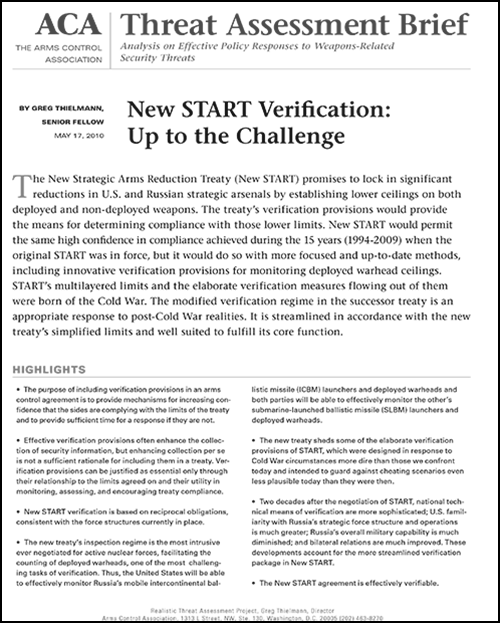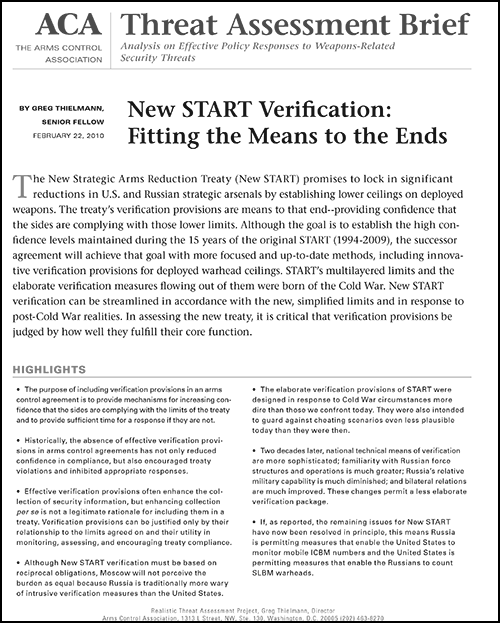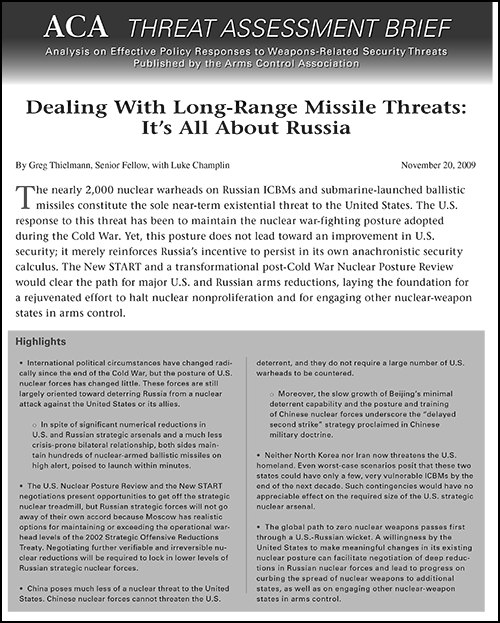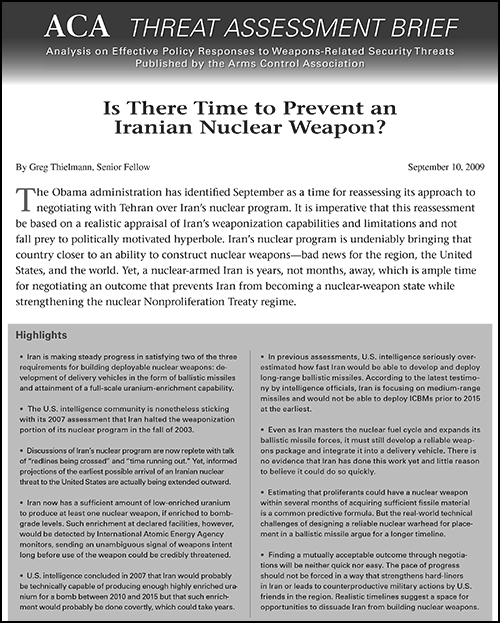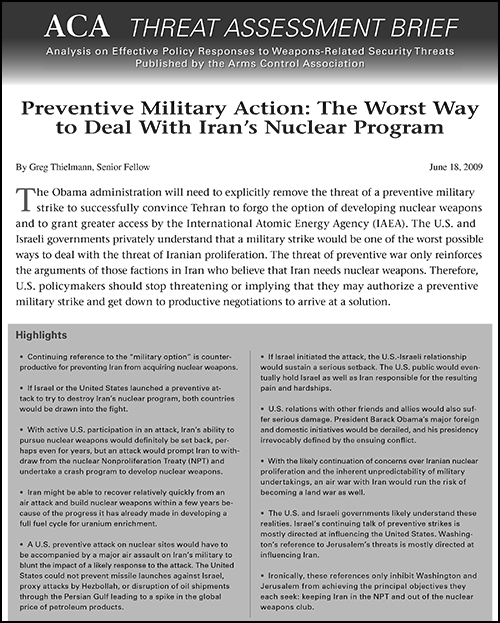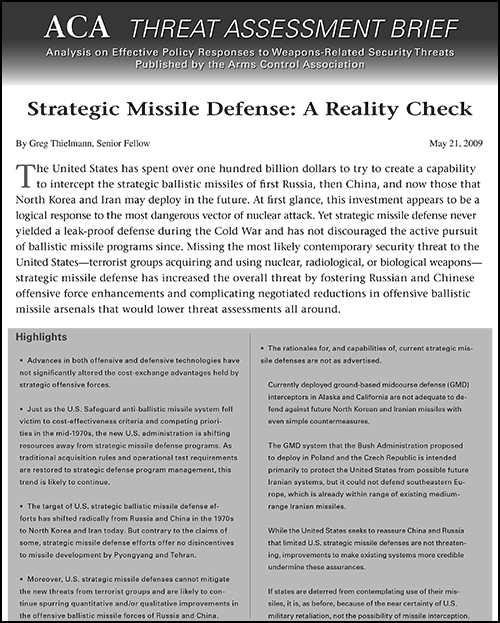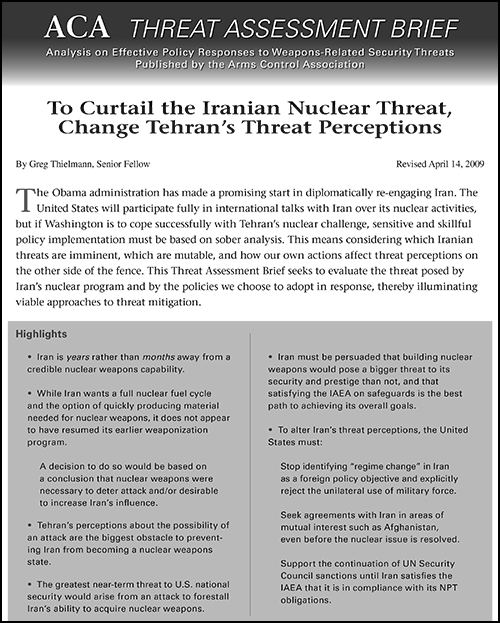Arms Control Association Press Briefing
Thursday, October 22, 2009
9:30 - 11:00 A.M.
Carnegie Endowment for International Peace, Choate Room
1779 Massachusetts Ave, NW, Washington, DC
For the first time in several years, serious multilateral discussions with Iran over its nuclear program were held on October 1. The outcome of that meeting was an agreement, "in principle" that Iran would send about 80 percent of its stockpile of low-enriched uranium to Russia for further enrichment, and then to France to fashion it into fuel for a safeguarded Iranian reactor. Another meeting is scheduled on October 19 to finalize the details of this arrangement. This tentative progress occurs in the context of revelations regarding a secret Iranian enrichment facility, which the International Atomic Energy Agency will visit for the first time on October 25. At this important juncture, ACA will host a panel of experts on Iran and its nuclear program to explain these developments, what they mean for efforts to address the Iranian nuclear challenge, and how to make progress moving forward.
Paul Pillar, Director of Graduate Studies, Center for Peace and Security Studies, Georgetown University. Pillar served for three decades as an analyst in the U.S. intelligence community, including most recently as the national intelligence officer for the Near East and South Asia from 2000-2005. He will discuss how current developments affect the U.S. intelligence community's assessments on Iran and the likely consequences of a military strike on Iran's nuclear facilities.
Greg Thielmann, Senior Fellow, the Arms Control Association. Thielmann was most recently a senior professional staffer of the Senate Select Committee on Intelligence and previously a U.S. Foreign Service Officer for 25 years, last serving as Director of the Strategic, Proliferation and Military Affairs Office in the State Department's Bureau of Intelligence and Research. He will address how recent events may impact the timeframe in which Iran could develop a nuclear weapon and the time available for a diplomatic strategy to make progress.
James Dobbins, Director, RAND International Security and Defense Policy Center. In addition to serving in several senior diplomatic posts in the White House and State Department, Dobbins was the U.S. representative to the Bonn Conference on Afghanistan in 2001, which involved negotiating with Iranian officials on establishing the new Afghan government. Bringing his experience in negotiating with Iran, he will weigh in on what the initial talks have accomplished, what to expect from the Iranian negotiators, and where the U.S. diplomatic approach should go from here.
Peter Crail, Nonproliferation Analyst, Arms Control Association, Moderator
